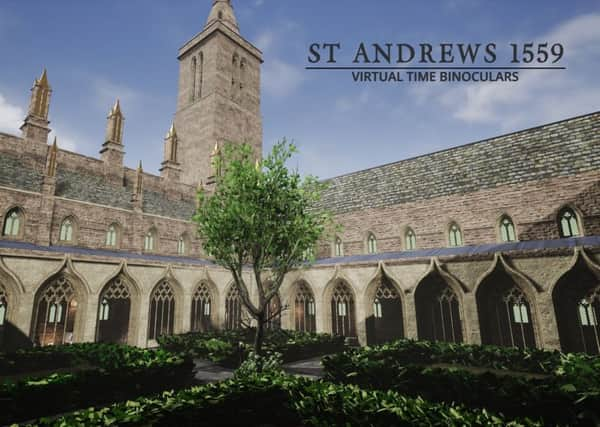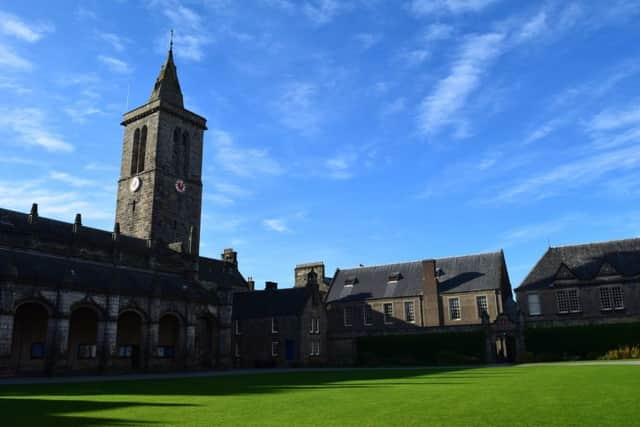Medieval St Andrews brought to life in virtual recreation


St Salvator’s Quad and Chapel, at the heart of the University of St Andrews, can now be seen in a 16th century virtual recreation.
Historians and computers scientists at the university have joined forces and deployed historic images and manuscripts from its archives.
Advertisement
Hide AdA video revealing the reconstruction of the St Salvator’s Site is the first phase of a wider project to digitally recreated the whole of St Andrews in 1559 - just before its citizens officially adopted Protestantism.


St Salvator’s was selected due to its historic significance as the site of the burning of a young theologian, Patrick Hamilton, for challenging the authority of the Roman Catholic church in Scotland.
Dr Bess Rhodes, a researcher on the project, said: “We selected St Salvator’s as the place to begin our reconstruction as a major landmark in the modern university and the town. It was of course also the scene of one of the most horrific events of the Scottish Reformation.


“Particularly chillingly, Hamilton’s death was something the university was directly involved in – playing a role in the prosecution and conviction of this very young man.
“Yet at the same time St Salvator’s has been the scene of fantastic academic achievement and many happy incidents in the university’s history.”
A spokeswoman for the university said: “St Salvator’s College was founded in 1450 by Bishop James Kennedy as both an educational and a religious institution, providing a rigorous academic training for young men who would primarily go on to serve in Scotland’s late medieval Catholic Church.
Advertisement
Hide AdDuring the Middle Ages, St Andrews was the religious capital of Catholic Scotland. However, in the 16th century many Scots turned against Catholicism, inspired by new ‘Reformed’ interpretations of Christianity coming out of continental Europe.
“In 1559 the St Andrews burgh officials, inspired by the Protestant preacher John Knox, officially rejected Catholicism, and set about transforming local religious buildings, smashing altars and statues, burning church furnishings and books, and ending the religious function of many sites within the city.
Advertisement
Hide Ad“The St Salvator’s buildings were altered by the Reformation, and by further rebuilding work in the 18th and 19th centuries.
“Although only small sections of the medieval college buildings survive, their glories can now be explored virtually.
St Andrews can claim to be the birthplace of the Scottish Reformation, with four early Reformers having been put to death for their beliefs in the town, including 24-year-old Patrick Hamilton, the first Scottish Protestant martyr, in 1527 and the last, 88-year-old Walter Milne, in 1558.
They are commemorated in the Martyrs’ Monument, which was designed by architect William Nixon and erected in 1843, on a site overlooking the Old Course golf course.
A 360 virtual tour of St Salvator’s can be accessed here.